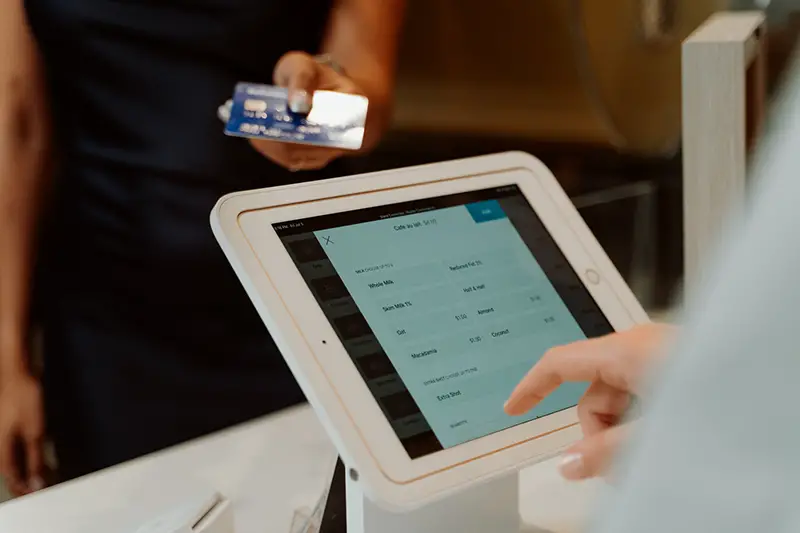Click here to get this post in PDF
Once clinking cash registers, retail POS systems have been continuously evolving, eventually turning into advanced operational hubs. Retail companies use them to take care of numerous activities, be it sales, finances, or marketing, and increase profit through access to data and advanced functionality. With the proliferation of mobile technologies, POS tools have also become a key component in providing consistent omnichannel experiences shaped around customers. Find here the best restaurant POS systems.
POS software can offer multiple functions. Consultants from Itransition named the top six requests from their customers that a well-developed POS system can cover.
“I want to control my inventory”
Inventory control used to be an extremely labor-intensive and error-prone process that could neither explain lost items nor offer reliable stocking predictions. Luckily, it can be completely reinvented in terms of efficiency and visibility with the help of retail POS software.
First and foremost, it removes the ‘manual’ element by streamlining catalog categorization and updates and changing stock quantities in real-time when items are delivered, returned, purchased, or disposed of. When all items are accumulated in one place and categorized, it’s easy to perform bulk operations, like full or partial inventory counting, SKU filtering and grouping, applying discounts, transferring stock to another store location, and more. What’s more, all transactions that pass through the POS system can be traced back to the initiator and can’t be compromised, which provides more transparency and ensures data security.
“I want to improve in-store experience”
Those shop owners that treat POS stations as static registers where visitors pay for their purchases can lose to their competitors that use POS systems for enhancing the in-store experience. For instance, POS can support different payment methods and make it easy for customers to split the payment, deduct loyalty bonuses, apply gift cards, and more.
A portable POS can also solve the issue of lines and shopping-floor information requests. For instance, shop assistants can look up availability at any store location, offer similar items, and even check out customers waiting in line in case there are any congestions. POS can also help streamline all kinds of return schemes, like buy-online-return-in-store or curbside returns, and make it convenient for customers.
What’s more, POS can accumulate customer data and source it from the connected CRM and IoT devices and help personalize experiences by providing tailored offers, unlocking new loyalty bonuses, or generating promo codes for online purchases right at the counter.
“I want to boost employee productivity”
The forward-thinking business community has come to realize that happy employees mean happy customers. So store owners are right to expect their staff to be more productive once they have made sure they are satisfied with their working experience. POS software can both relieve the staff from mundane and time-consuming tasks and empower them with more efficiency and the feeling of being valued.
A mobile-friendly nature of POS means the staff can use a dedicated app on their phone or a POS tablet to have all the necessary information at their fingertips when communicating with visitors on the floor, which is a significant confidence-booster for new employees. The tool also allows them to check out customers in lines to save a sale, avoid crowd accumulation, cross-sell and upsell, or deal with returns or refunds in a way convenient for customers.
Meanwhile, the POS system can help analyze employee performance, optimize scheduling during peak hours, and spot opportunities for training needed.
“I want to learn more about my customers and business performance”
As POS software is present in almost every customer engagement, it is a valuable source of information on customer transactions, purchasing history, loyalty program activities, and more. Using this data, it’s possible to learn more about customers’ preferences and apply this knowledge to tailoring their in-store journeys.
The POS system can also show a bigger picture in terms of how well the store is doing, providing sales analytics and staff performance reports which can help spot seasonal sales trends, gaps in scheduling, stock replenishment insights, frequently returned items, and more. As a result, companies can have enough data to optimize their supply chains and make correct predictions when making plans for assortment, pricing, or promos.
“I want to manage multiple store locations”
Retail chain stores are expected to provide consistent experiences while offering stock tailored to a certain location and shopper types. POS software can become a hub where it’s possible to manage staff, pricing, and the supply chain across different locations.
- POS helps analyze employee performance across locations and understand how to optimize scheduling and staffing decisions, allocate employees to their best-performing categories, prevent staff turnover, and more.
- The POS system helps spot local preferences per certain store location and optimize stocking. POS software also makes it possible to provide up-to-date stock information online to let customers check out availability before choosing the location to visit.
- POS helps optimize and balance stock quantities in warehouses. This way, warehouses won’t be overloaded while every store location can be sure to get items they need at the right time and avoid out-of-stock problems, even during seasonal peaks.
“I want to build the retail tech ecosystem”
Cloud-based POS software is built for integrating with other retail systems, like ERPs, CRMs, ecommerce platforms, loyalty or payment platforms, and lets data flow smoothly between the systems. In other words, it can serve as a hub that unites frontend and backend systems and can be used for optimizing all related processes and orchestrating customer journeys across channels.
POS all the way
It’s clear that POS software is the tool number one for almost any retailer. At the same time, the current degree of competition requires retail businesses to upgrade their POS systems with advanced features and put them at the center of their commerce ecosystems.
Also read:
Why Using the Right Type of Retail Hangers Matters
What Really Annoys Your Customers at Checkout
About the Author
Roman Davydov is Ecommerce Technology Observer at Itransition. With over four years of experience in the IT industry, Roman follows and analyzes digital transformation trends to guide retail businesses in making informed software buying choices when it comes to commerce and stores management automation.


